Explore 50 apps in depth! RedmiK6016GB evaluation: Is large memory a strength or a gimmick?
During the process of using your phone, I don't know if you have ever encountered this situation. While watching a TV drama with great interest, suddenly someone came with a message
During the process of using your phone, I don't know if you have ever encountered this situation. While watching a TV drama with great interest, suddenly someone came with a message. After switching out and replying to a message, you switched back to the video interface. The software restarted and the video you just watched disappeared
For example, the iPhone XR that I have used, with WeChat and QQ residing in the backend, basically takes up one-third of the memory space. Then, I open a Weibo account, write a copy, open a browser to search for information, and switch back to Weibo. The copy I just wrote is also gone
It is precisely because of this situation that many people nowadays frequently switch on and off the background using their phones, fearing that the software they were just using might be quietly killed.
So, is there a way to completely break free from the chaos of mobile phones killing the backend at will?
The answer is, yes.

The three exclusive optimizations of atomic memory, intelligent scheduling, and process freezing are aimed at solving the chaos of randomly killing the background. The first model, the RedmiK6016GB version, allows us to experience the pleasure of software opening and background switching at will. With the new 16GB+1TB version, the K60 series memory and storage are fully loaded.
We were fortunate enough to have received the top of the line version of RedmiK6016GB+1TB from Fast Technology. In response to the aforementioned issues, we not only conducted theoretical performance tests on the phone, but also conducted a series of tests on the software startup speed and background killing. The purpose is to verify whether this high-performance large memory version of K60 is more realistic or just gimmicks than strength.
To ensure the objectivity of the testing, we turned on high-performance mode for both phones, demonstrating the highest level of performance release for both phones, and turned off memory expansion for testing at a room temperature of 25 degrees Celsius.
As for why the memory expansion function needs to be turned off, this is because the memory rate is usually several tens of GB per second, while the flash memory rate is only 2-4GB/s. If memory expansion is turned on, the phone will borrow some space from the flash memory when the high load memory space is insufficient.
Therefore, if memory expansion is enabled in low-end phones, it will indeed bring a certain level of smoothness under extreme load conditions. However, if it is enabled in high-end phones, there will be inconsistent memory flash rates, which will actually slow down the phone's running speed and accompanied by more obvious heating.
So, we will turn off the memory expansion function of both phones before conducting testing.
1. Antu Rabbit
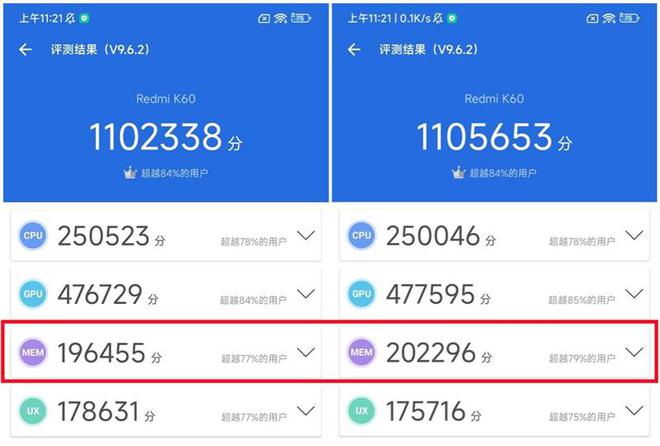
In the Antu Rabbit V9.6.2 version, a running score test was conducted. The RedmiK6012+512GB version in the left image had a comprehensive score of 1.10234 million points, while the RedmiK6016+1TB version on the right had a comprehensive score of 1.10565 million points.
We can see that in the memory testing project, the 16GB version surpassed the 12GB version by approximately 2.973% with a benchmark score of 202300.
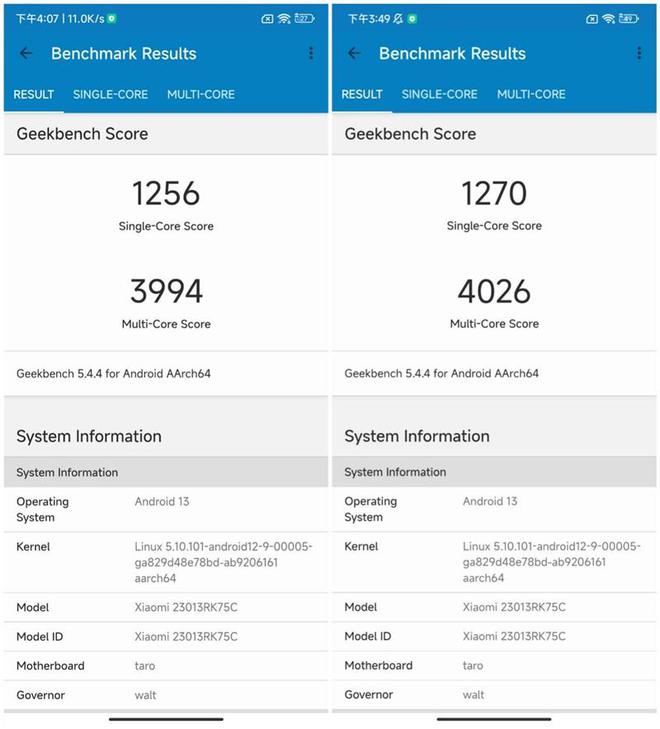
In the CPU single test, the RedmiK60 with a single core score of 1256 points and a multi-core score of 3994 points for the 12GB version in the left figure, and 1270 points and 4026 points for the 16GB version in the right figure.
From the test results alone, larger memory does not improve the CPU performance of mobile phones.
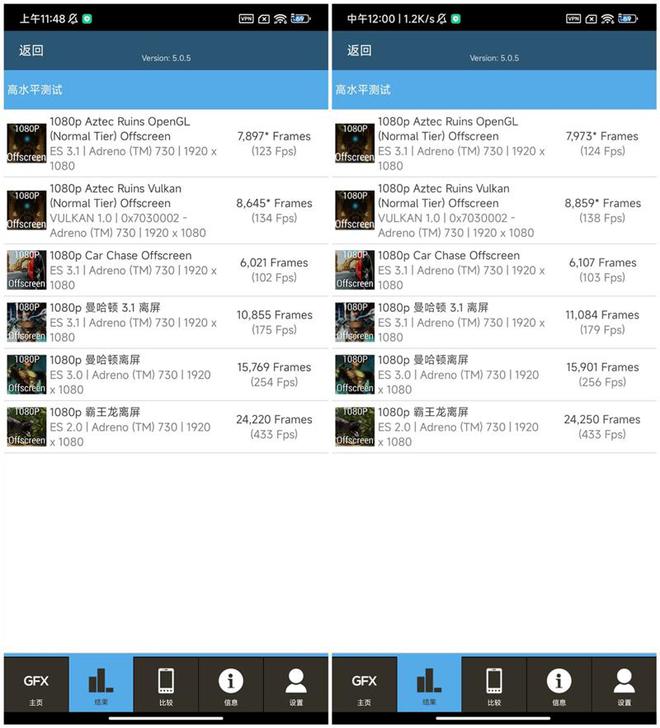
In the GPU single test, there was no significant difference between the 12GB version on the left and the 16GB version on the right in the six 1080P routine tests.

In flash memory testing, the 1TB K60 showed a slight improvement in write performance, with a sequential read speed of 1975.45MB/s, which is approximately 3.567% faster than the 512GB 1907.41MB/s.
In terms of random read and write, the 1TB version has a speed of 343.67MB/s, and the 512GB version has a speed of 318.46MB/s. The K60 with large storage has a lead of nearly 7.9%.
5. Memory testing
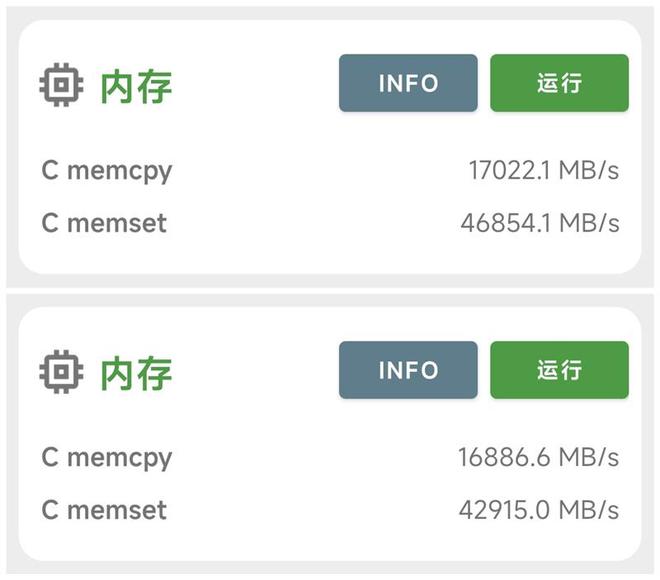
In memory testing, we turn off memory expansion for testing.
The K6016GB version shown above has a replication speed of 17.02GB/s and a write speed of 46.85GB/s.
The K6012GB version in the following figure has a replication speed of 16.69GB/s and a write speed of approximately 43GB/s.
Overall, the memory speed of 16GB is approximately 9% higher than that of 12GB, indicating that the presence of large internal devices ensures that more apps can reside in the background, and the software switching speed will also be improved to a certain extent.
In order to further explore the performance experience of large memory, we conducted 20 consecutive open speed tests and 2 rounds of backend application testing.
This test can fully test the smoothness of daily use of mobile phones when residing in multiple application backgrounds, especially their true performance under high load conditions.
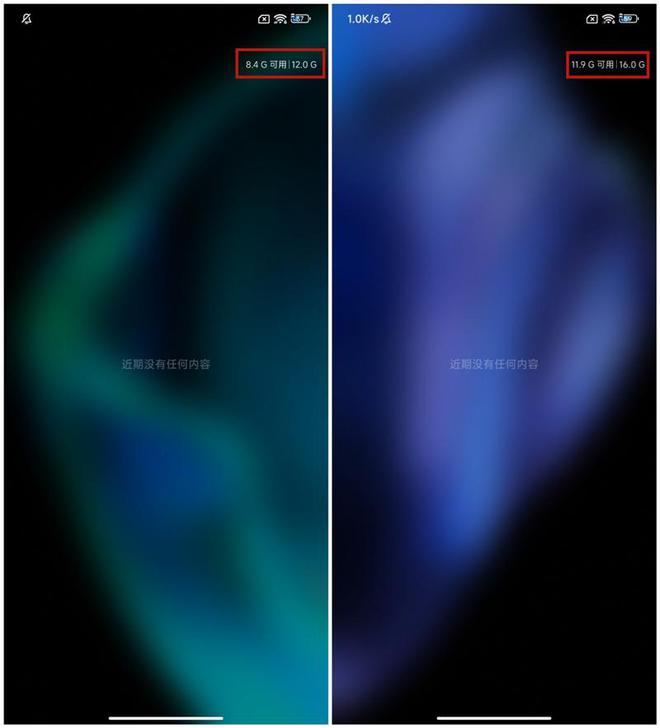
Before testing, we checked the remaining memory of the two phones after they were turned on. The 12GB version had 8.4GB of available memory and the 16GB version had 11.9GB of available memory.

We downloaded 50 third-party apps, including 3 large mobile games, and conducted 20 rounds of application cold start and hot start comparison tests on two phones. We recorded the time taken for cold start and the number of applications retained in the hot start backend.
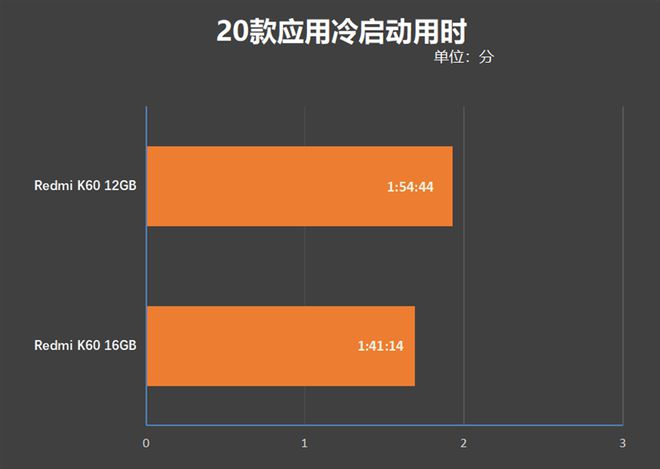
Firstly, we conducted a cold start speed test on 20 applications. We opened each of them one by one. The 12GB version of the K60 took a total of 1 minute, 54 seconds, and 44 milliseconds, while the 16GB version of the K60 took a total of 1 minute, 41 seconds, and 14 milliseconds. The difference between the two is nearly 13 seconds, indicating that there is enough redundant space in the large memory to load software data, which can significantly improve the loading speed of the front-end software.
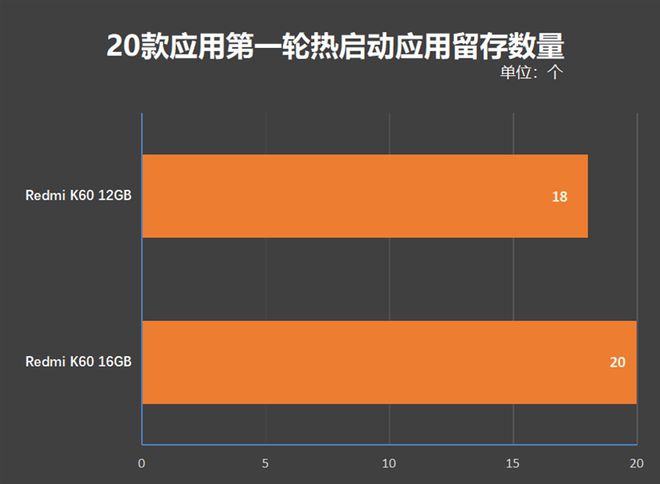
After measuring the cold start speed, let's take a look at the situation where the backend application resides.
The 12GB K60 retains a total of 18 apps in 20 applications, while the 16GB K60 has no app that kills the backend. All 20 applications have been preserved, indicating that large memory still has a significant improvement effect on the retention ability of mobile backend applications.
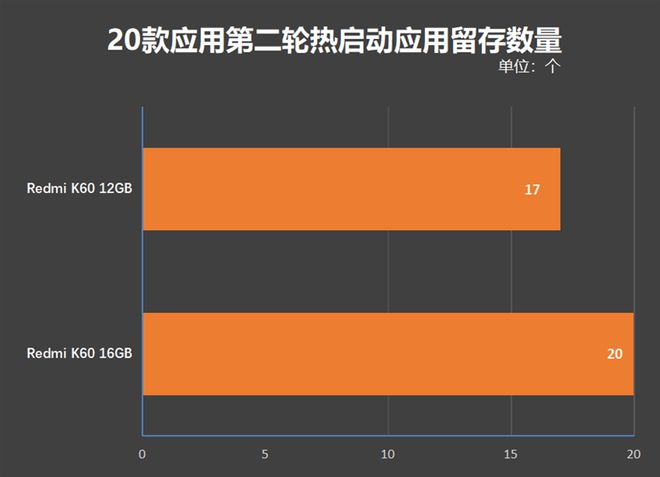
In the second round of testing, the 16GB version of K60 still maintained the good quality of 20 rounds of application without killing the backend, while the 12GB version retained 17 applications.
In the APP we launched, there are three large-scale mobile games, namely King Glory, Peace Elite and Genshin Impact. Neither of the two mobile phones has killed these three mobile games. It can also be seen that large memory can achieve the viability of key applications, with games as the primary survival application.
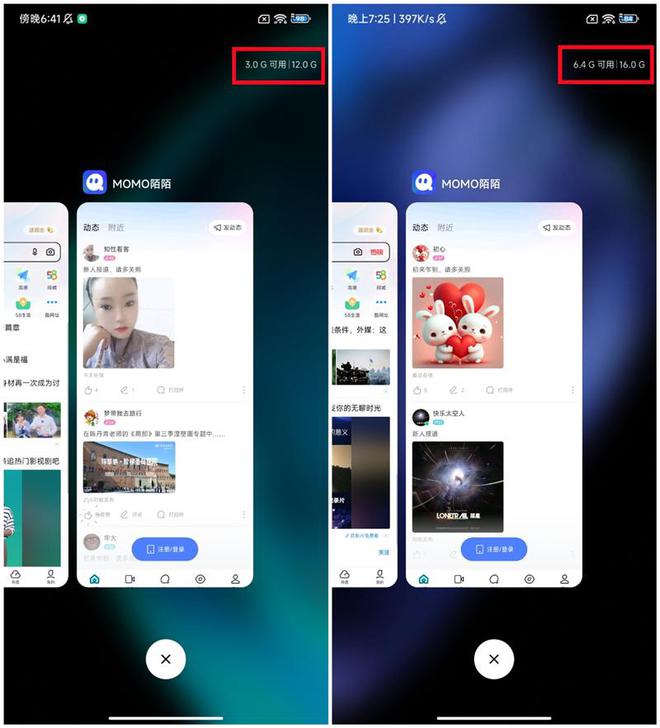
At this point, we checked the remaining memory situation in the mobile phone background. The 16GB version of the K60 still has 6.4GB of available memory even after opening 20 applications, while the 12GB version of the K60 only has 3GB of available memory. The remaining memory of the large memory version is twice that of the small memory version. In theory, opening a few more applications can also preserve all of it.
So by testing here, we can see that large memory is not only faster than software opening speed, but also superior in terms of the number of backend applications retained.
So, in extremely heavy load scenarios, can a 16GB large memory phone widen the gap with 12GB?
In order to delve deeper into the advantages brought by large memory, we will now conduct a set of 50 applications that are almost impossible to use in daily mobile phone use, including hot start retention and heavy testing.
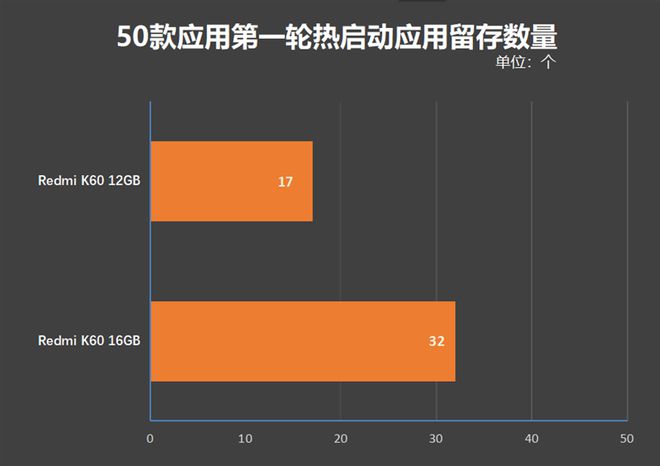
In the first round of 50 rounds of application testing, there were 17 backend activations for 12GB K60 and 32 backend activations for 16GB K60. This difference is obvious, and the backend activations for large memory versions are even close to twice that of small memory versions.
As Redmi has promoted, the 16GB version has 228% more backend residency in heavy load scenarios.
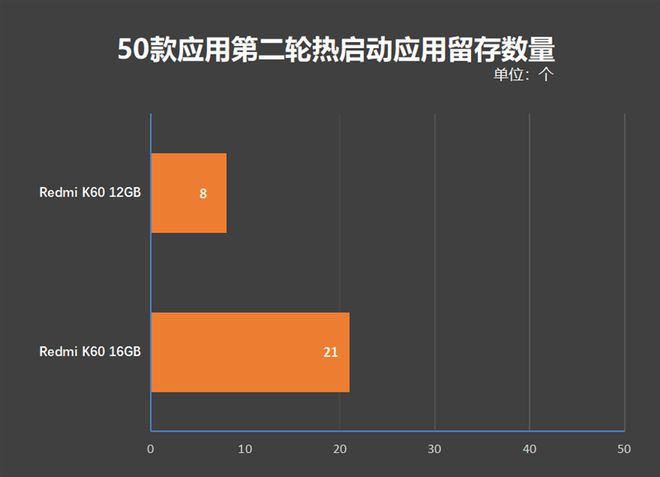
In the second round of hot start testing, only 8 applications were retained for the 12GB version of K60, a decrease of nearly 112.5% compared to the first round. The 16GB version of K60 was able to retain more than 20 applications, with a total of 21, a decrease of 52.8% compared to the first round.
So, there are certain advantages in terms of software opening speed and the ability to protect the background in Dainei, but what about its game performance?
We tested three identical games using two different memory versions of RedmiK60, and recorded the frame rate and power consumption in the game.
1. King of Glory
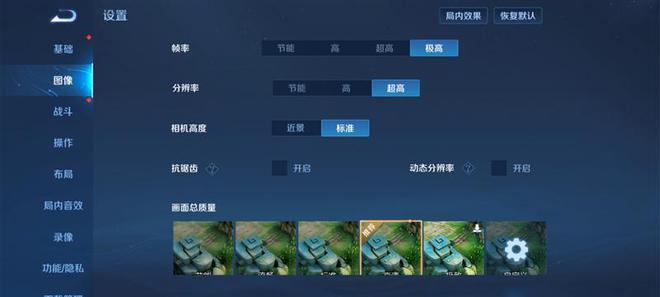

The King of Glory mobile game has enabled high-definition image quality and extremely high frame rate. The average frame rate of the 16GB memory version K60 is stable at 116.8 FPS, while the 12GB version K60 is stable at 119.2 FPS. On the contrary, the low memory version is more stable.
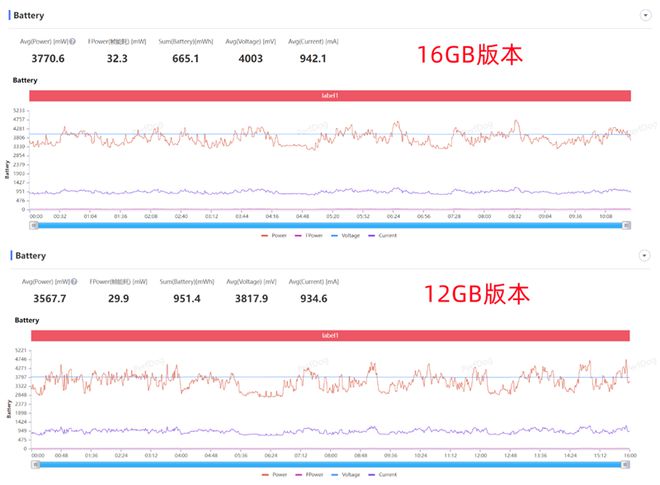
In terms of power consumption, the average power consumption of the 16GB version is 3.77W, and the frame energy consumption is 32.4mW; The average power consumption of the 12GB version is approximately 3.568W, and the frame energy consumption is 29.9mW.
Based on the average frame rate, we can see that the energy efficiency ratio of 12GB K60 is 33.41, while the energy efficiency of 16GB K60 is relatively low, at 30.98. It is obvious that the energy efficiency of 12GB is superior.
2. Peace Elite

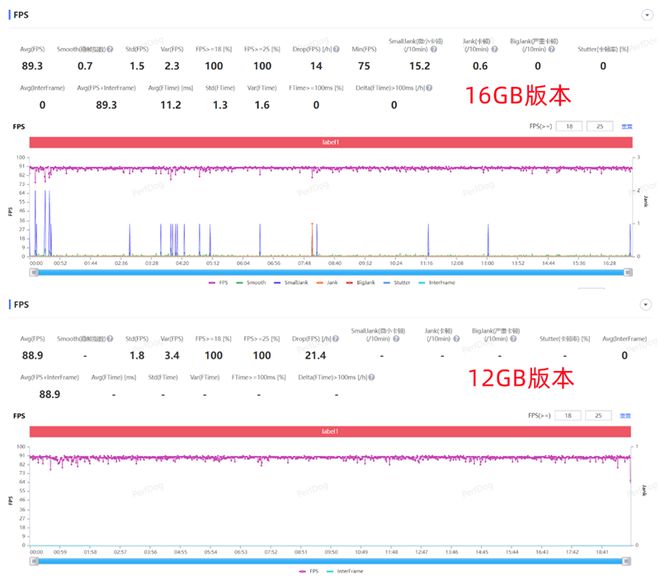
Peace Elite mobile game test, with an average frame rate of 89.3FPS for 16GB and 88.9FPS for 12GB, the difference is negligible.
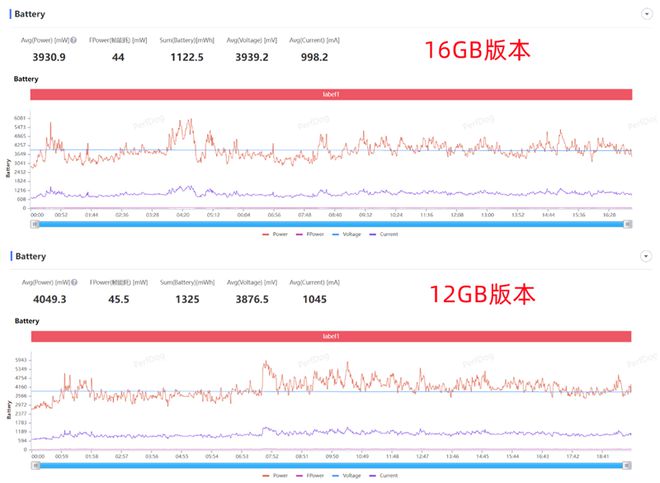
In terms of power consumption, 16GB is 3.9309W with an energy efficiency ratio of 21.95, 12GB is 4.0493W with an energy efficiency ratio of 22.72, which is still slightly higher than the low memory version.
3. Genshin Impact


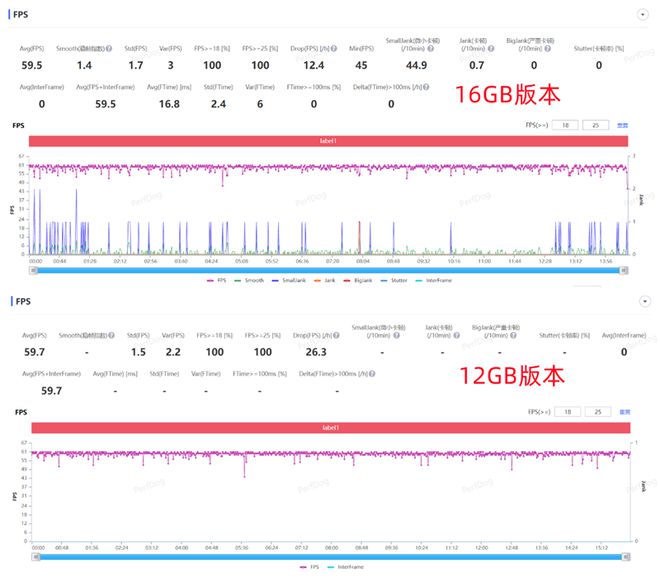
In the test of Genshin Impact mobile game, the highest image quality+60 frame mode is enabled, and the user can play tricks while running the picture. The 16GB average frame rate is 59.5FPS, and the 12GB average frame rate is 59.7FPS. There is still no big gap in the frame rate.

In terms of power consumption, the 16GB version of K60 has an average power consumption of 5.8932W and an energy efficiency ratio of 10.10, while the 12GB version of K60 has an average power consumption of 5.5134W and an energy efficiency ratio of 10.83, which is also higher for the latter.
Through testing the RedmiK6016GB large memory version, we have made the following summary:
In terms of performance, large memory has little impact on the continuous release of performance and gaming experience of mobile phones, but it has increased the opening speed of multiple applications by nearly 11.4%. At the same time, in terms of application liveliness, it is more than 200% stronger than 12GB.
The 16GB version of K60 has such excellent backend protection capabilities, and of course, it also comes with Redmi's three specialized optimizations: atomic memory, intelligent scheduling, and process freezing.
Even when playing Genshin Impact mobile games, we can open another hang up game in the form of a floating window to realize the novel experience of playing two games on the same screen.
So the biggest advantage of large memory is that while hosting multiple applications in the background, the speed of opening new applications is faster, and the ability to keep applications alive is strong. On this basis, it can also achieve multi game opening.
Therefore, if you are in need of a powerful and valuable flagship phone, the RedmiK6016GB+1TB version must not be missed.
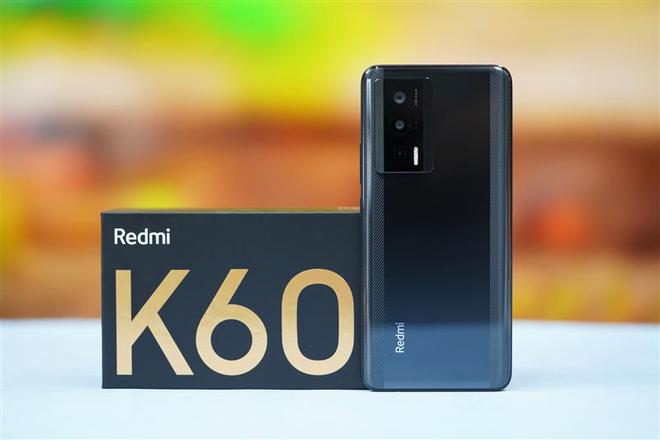
Tag: Explore apps in depth RedmiK6016GB evaluation Is large memory
Disclaimer: The content of this article is sourced from the internet. The copyright of the text, images, and other materials belongs to the original author. The platform reprints the materials for the purpose of conveying more information. The content of the article is for reference and learning only, and should not be used for commercial purposes. If it infringes on your legitimate rights and interests, please contact us promptly and we will handle it as soon as possible! We respect copyright and are committed to protecting it. Thank you for sharing.


